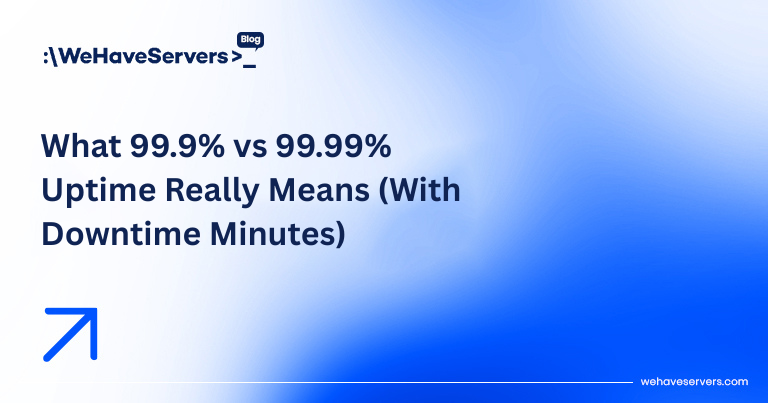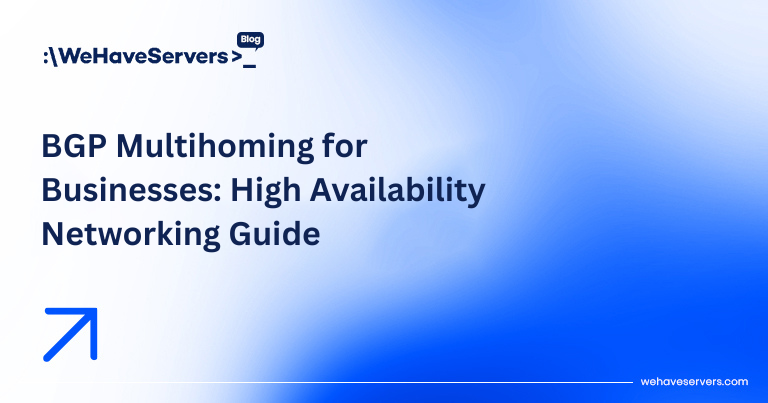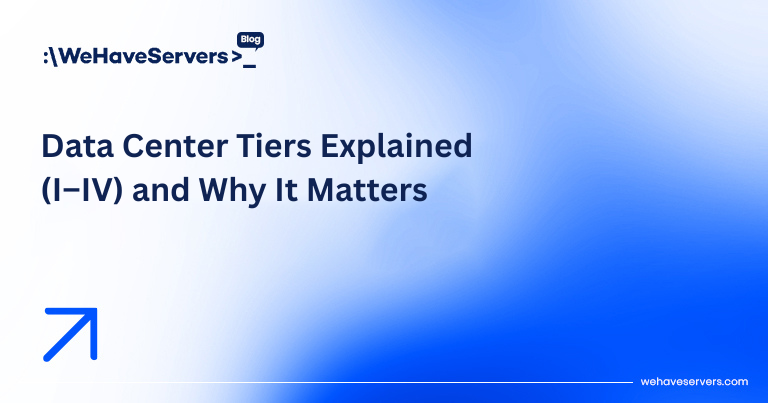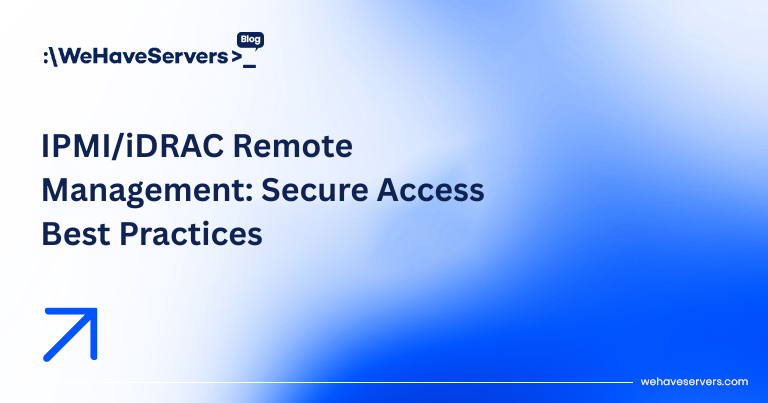
What 99.9% vs 99.99% Uptime Really Means (With Downtime Minutes)
What 99.9% vs 99.99% Uptime Really Means (With Downtime Minutes)
Every hosting provider advertises uptime guarantees. But what does “99.9% uptime” actually mean in practice? And how does it compare to “99.99% uptime”? For businesses running e-commerce stores, SaaS platforms, APIs, or critical infrastructure, the difference between three nines and four nines can mean hours of downtime vs just minutes per year.
This article breaks down the math behind uptime SLAs, compares real-world downtime tolerances, explains how uptime is monitored, and explores engineering strategies to achieve higher reliability. Whether you’re evaluating a VPS, dedicated server, or colocation provider, understanding these numbers is essential.
🔹 The SLA Math: From Nines to Minutes
Uptime is measured as a percentage of total time in a given period. Here’s what common SLAs translate to in downtime:
| Uptime % | Allowed Downtime (Year) | Downtime (Month) | Downtime (Week) |
|---|---|---|---|
| 99% | 3 days, 15h, 36m | 7h, 12m | 1h, 40m |
| 99.9% (3 nines) | 8h, 45m, 36s | 43m, 12s | 10m, 4s |
| 99.99% (4 nines) | 52m, 34s | 4m, 19s | 1m, 0.5s |
| 99.999% (5 nines) | 5m, 15s | 26s | 6s |
Observation: The difference between 99.9% and 99.99% uptime is nearly 8 hours of downtime per year. That’s the difference between one major outage per quarter vs near-seamless availability.
🔹 Why 99.9% Is Common, 99.99% Rare
- 99.9% (three nines): Achievable with redundant power, network, and basic failover. Common in mid-tier VPS/dedicated hosting.
- 99.99% (four nines): Requires multi-path networking, clustered storage, redundant cooling, advanced monitoring, and usually multi-datacenter HA.
- 99.999% (five nines): Telecom/carrier-grade reliability. Extremely costly, requiring geo-redundancy and active-active setups.
🔹 Business Impact of Downtime
E-commerce Example
An online store with $1M/month revenue suffers an outage:
- 99.9% SLA: 43 min downtime → ~$30,000 lost sales.
- 99.99% SLA: 4 min downtime → ~$3,000 lost sales.
SaaS Example
A SaaS platform with 10,000 active users may see:
- Customer churn if outages exceed SLA.
- SLA violation credits — providers refund 5–10% of fees if uptime drops below guarantee.
🔹 How Uptime Is Measured
Providers typically measure uptime at the network and power level (can your VM/server be pinged?). Application-level uptime (e.g., is your WordPress site serving pages) is your responsibility.
Monitoring tools used in 2025:
- Zabbix — enterprise monitoring for servers, applications, and SLAs.
- Prometheus + Grafana — time-series metrics, dashboards, SLA visualizations.
- Pingdom / UptimeRobot — external synthetic checks.
🔹 Engineering for 99.99%+ Uptime
1. Power Redundancy
- Dual UPS + generator backup.
- DC Tier III+ facilities require N+1 or 2N redundancy.
2. Network Redundancy
- BGP multihoming with at least two carriers.
- DDoS mitigation (scrubbing centers, inline protection).
3. Hardware Redundancy
- RAID-10 or ZFS storage pools.
- Dual PSUs, hot-swappable components.
4. Application Redundancy
- Kubernetes HA clusters.
- Load balancers with health checks.
5. Geo-Redundancy
- Multi-datacenter deployments.
- CDN and edge caching for resilience.
🔹 SLA Fine Print
Providers often exclude downtime caused by:
- Scheduled maintenance.
- DDoS attacks beyond provider’s mitigation capacity.
- Customer misconfiguration (bad code, firewall rules).
Always read the SLA terms. Some “99.99%” guarantees apply only to core network uptime, not your actual VM.
🔹 Real-World Case Studies
Case 1: VPS Host with 99.9% SLA
- Single datacenter, no BGP multihoming.
- Experienced 7h outage due to fiber cut.
- Still technically within 99.9% SLA, but customer churn was high.
Case 2: Financial API with 99.99% SLA
- Active-active HA across two data centers.
- Automated failover reduced downtime from hours to 30s.
- Met strict compliance standards (MiFID II, PCI DSS).
✅ Conclusion
The difference between 99.9% and 99.99% uptime is massive for mission-critical workloads. While both sound impressive, four nines requires significantly more redundancy, monitoring, and cost. Businesses should align SLA targets with:
- Budget: Higher uptime costs more.
- Workload criticality: Can you afford 8h downtime per year?
- Compliance needs: Finance, healthcare, and telecom often require four nines or better.
At WeHaveServers.com, we operate Tier III+ Romanian/EU data centers with SLA-backed 99.99% uptime guarantees — combining redundant networking, power, and proactive monitoring.
❓ FAQ
Is 99.9% uptime good enough?
For blogs or small business sites, yes. For e-commerce, APIs, or SaaS, 99.99% is strongly recommended.
Does 99.99% SLA guarantee no downtime?
No. It allows ~52 minutes per year. For “five nines,” downtime is only ~5 minutes annually.
Can VPS providers realistically achieve 99.99%?
Yes, if hosted in Tier III/IV facilities with redundant power and network. But application-level uptime is still your job.
How is downtime tracked?
Through monitoring (Zabbix, Prometheus, Pingdom). SLAs often measure network reachability, not site functionality.
What’s the highest uptime possible?
“Five nines” (99.999%) is the practical maximum, but only achievable with geo-redundancy and massive investment.



